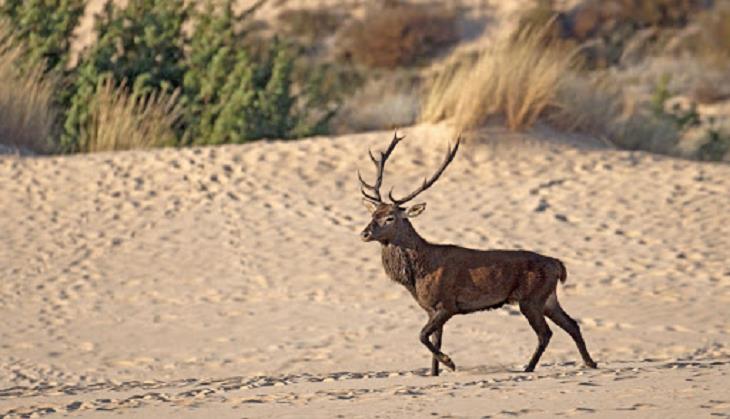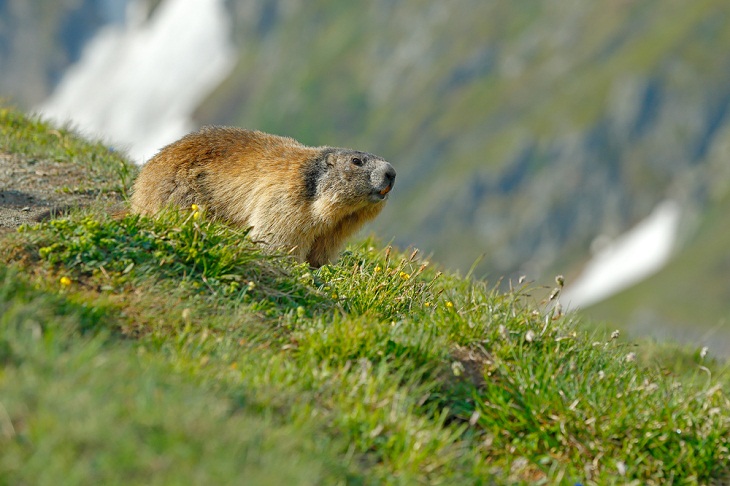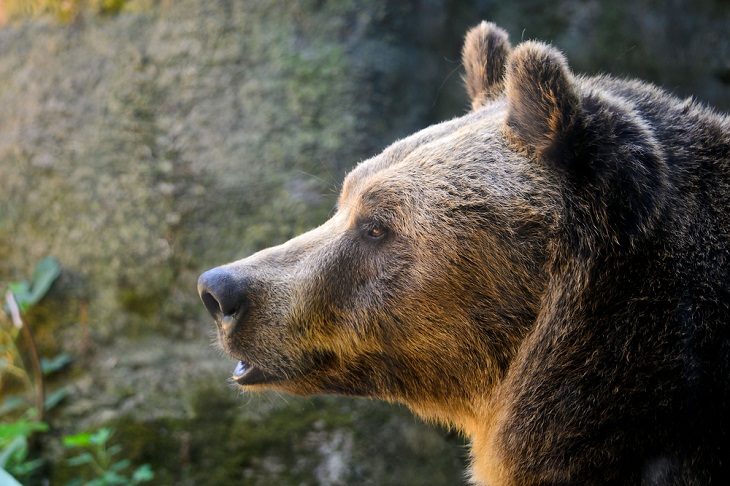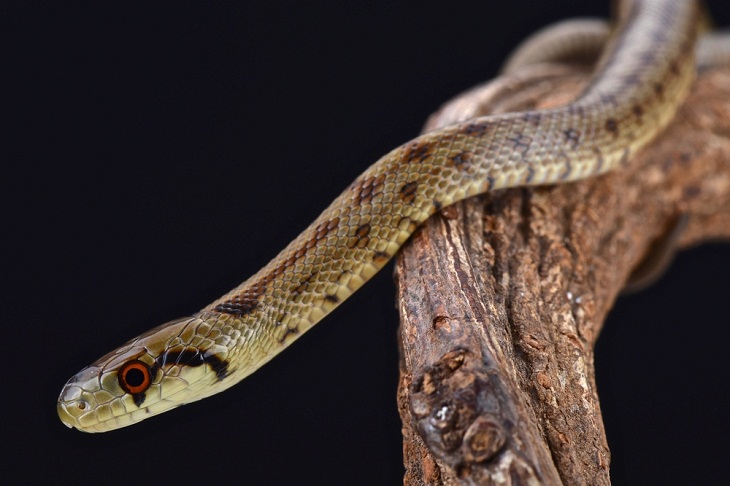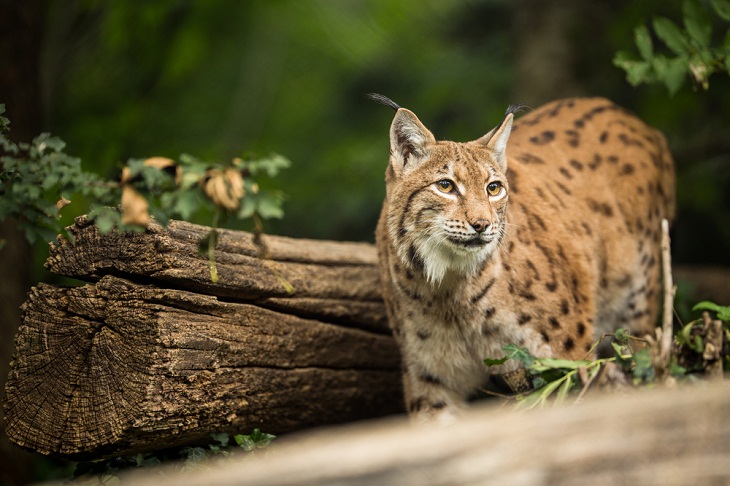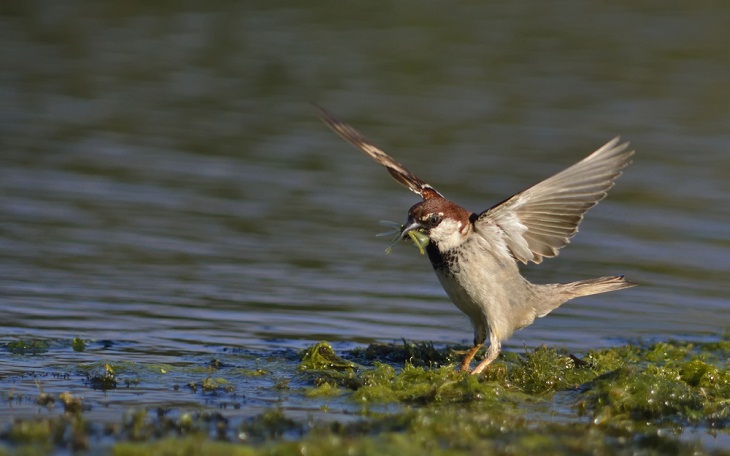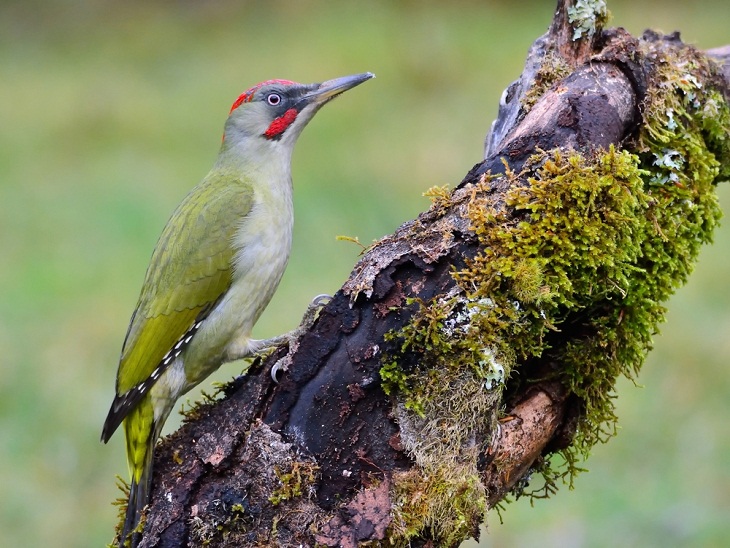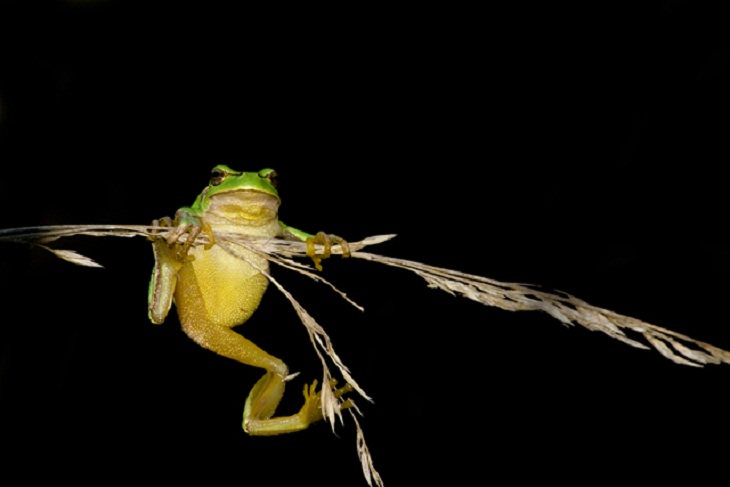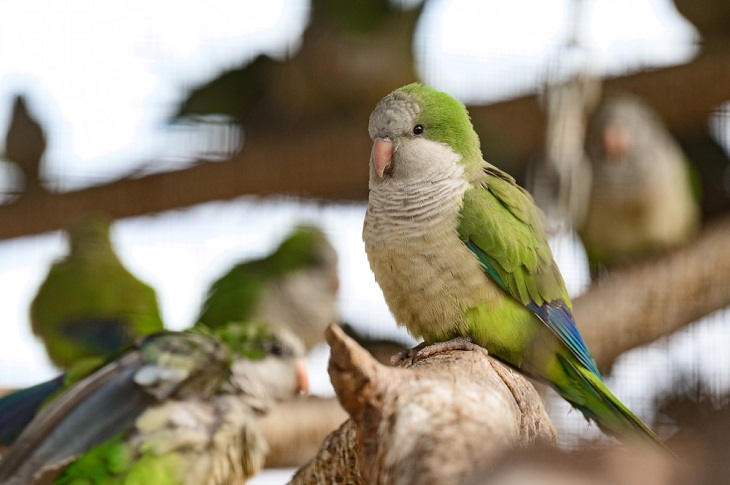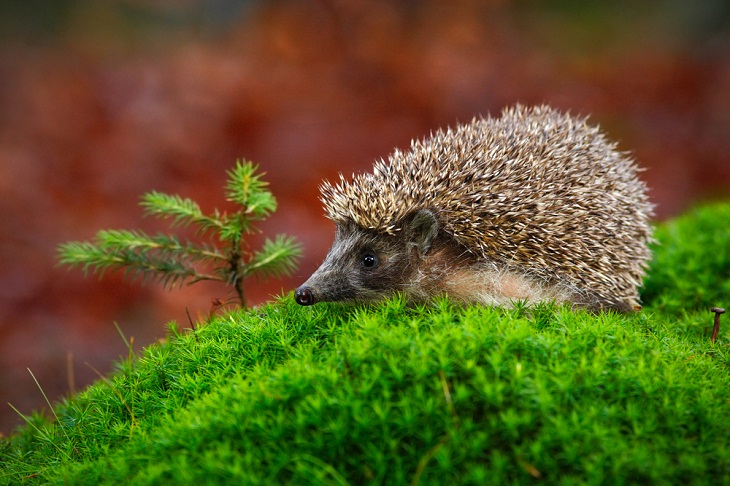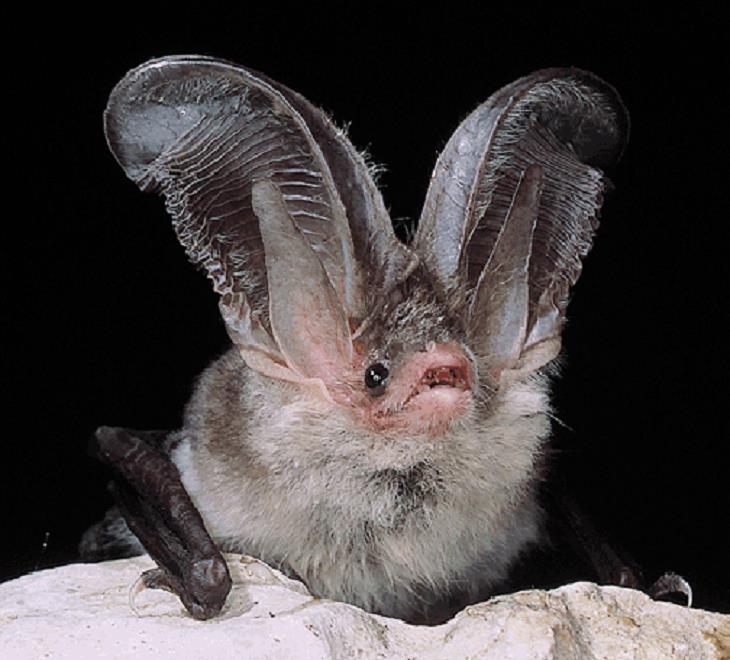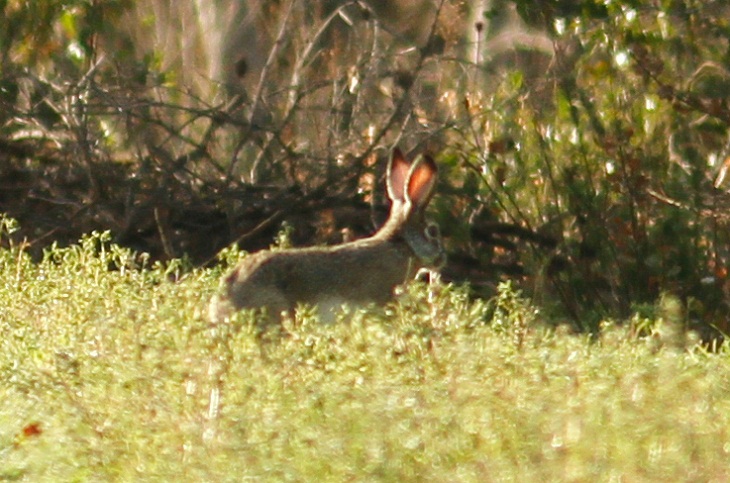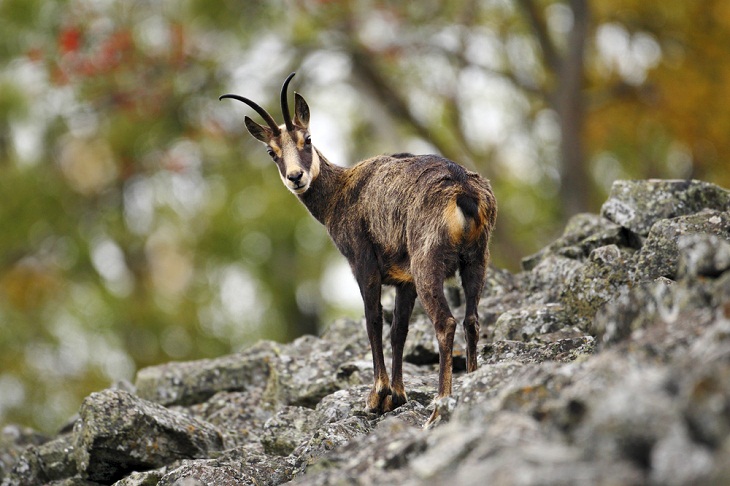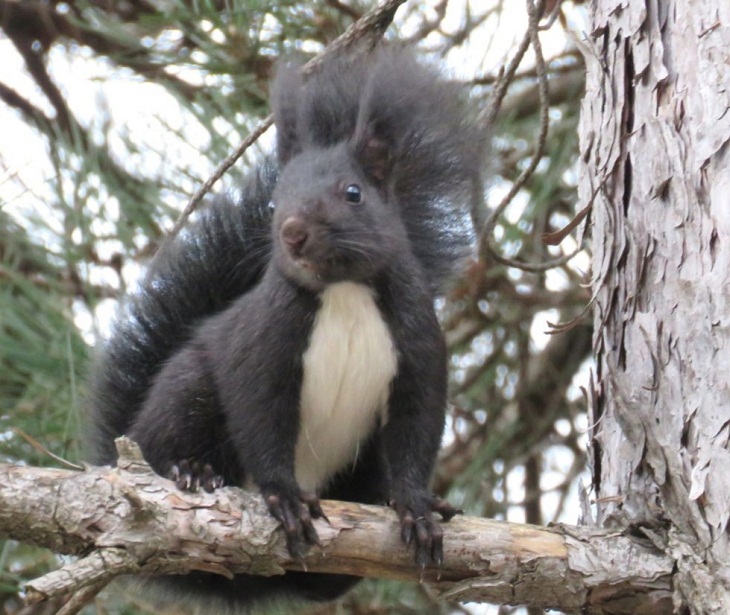A marmot in the Italian Alps
Italy has 20 national parks and 130 regional parks to support its wide array of wildlife. Further, 150 federally protected wildlife territories, 270 state-designated ones, and 16 marine reserves have been established in the country.
Italy is home to about 57,000 known species of animals, 4,777 of which are endemic to the region. We wanted you to meet some of the many special animals in the country.
15 Special Wild Animals Found in Italy
1. Corsican Red Deer
The Corsican red deer (Cervus elaphus corsicanus), also known as the Sardinian deer or the Corsican deer, is a species of deer endemic to the islands of Sardinia and Corsica. It’s the smallest red deer subspecies; they have shorter legs to help them climb mountainsides, and their antlers are smaller than other members of the red deer family.
The best time to spot them in the wild is August to November, as that’s their mating season. The Corsican red deer is endangered, and plans are underway to save the species from extinction through artificial translocation projects.
2. Alpine Marmot
Alpine marmots (Marmota marmota) are large ground-dwelling squirrels that are excellent diggers. They are known to live in large groups. These highly social animals dig an extensive structure of burrows and tunnels and feed on grasses, herbs, insects, grain, and spiders.
The Alpine marmot is found at heights between 800-3,200 m (2,624–10,500 ft) in the Apennines in Italy. They’re considered the largest squirrel species and can get as long as 54 cm (21 in) and weigh up to 8 kg (18 lb).
3. Italian Wolf
Also known as the Apennine wolf, the Italian wolf (Canis lupus italicus) is the national animal of Italy. It is a subspecies of the grey wolf native to the Italian Peninsula and lives in the Apennine Mountains. Approximately 600 to 700 individuals remain alive today. Not too long ago, however, only about 70 Italian wolves were left in the wild. They have made a stunning comeback thanks to tireless conservation efforts.
This magnificent, powerful, and fierce animal had a profound influence on Latin American and Italian cultures and folklore.
4. Marsican Brown Bear
The Marsican brown bear (Ursus arctos marsicanus) is among the most interesting animals in Italy. Also known as the Apennine brown bear, it is a critically endangered subspecies of the Eurasian brown bear (Ursus arctos arctos). Marsican bears are larger than typical brown bears. As opposed to other bear species, the Marsican brown bear wanders around during winter hibernation while semiconscious.
The animal is named after Marsica, a historic area of present-day Abruzzo where these bears have long been present. Sadly, only about 50 specimens remain in the wild, mostly in the Abruzzo, Lazio, and Molise national parks in south-central Italy. Several conservation programs have been launched by local governments to save the bear, which is a major attraction for tourists.
5. Italian Aesculapian Snake
The Italian Aesculapian snake (Zamenis lineatus) is a species of snake endemic to Sicily and southern Italy. Forests, shrublands, arable land, rural gardens, and urban areas are common habitats for this snake. It is a nonvenomous snake that mostly feeds on small mammals, lizards, and eggs. Dark, long, slender, and usually bronzy in color, the Italian Aesculapian snake has smooth scales with a metallic sheen.
6. Eurasian Lynx
This wildcat is the biggest of the lynx species and, after the brown bear and the Italian wolf, is one of Europe's greatest predators. The Eurasian lynx (Lynx lynx) can survive extreme weather up to elevations of 5,500 m (18,000 ft). They’re pretty shy and elusive, much like leopards, and you would be lucky to see one in the wild.
The Eurasian lynx was declared extinct in Italy more than 100 years ago. However, the iconic mammal has made a comeback in the country since the 1970s thanks to a reintroduction program.
7. Italian Sparrow
The Italian sparrow (Passer italiae), sometimes known as the Cisalpine sparrow, is a passerine bird endemic to Italy and neighboring Mediterranean Basin countries. It is Italy's national bird and closely resembles the house sparrow (Passer domesticus) and the Spanish sparrow (Passer hispaniolensis).
The Italian sparrow can be found in the northern and central parts of the country and is a common sight in urban areas. This small, stocky bird has a dark brown crown, a black mask around its eyes, white cheeks, and a speckled bib under its beak.
Initially, it was believed that the Italian sparrow was a hybrid of the house sparrow and the Spanish sparrow. However, scientists have now classified it as a separate species.
8. European Green Woodpecker
European green woodpeckers (Picus viridis) are large green woodpeckers with black mustaches and red crowns. This bird, unlike other woodpeckers, eats mostly on the ground, probing into anthills and moving with an unusual, shuffling stride. It inhabits almost the entirety of Europe, including Italy, and is known to live in open woodlands, heathlands, farmlands with hedges, and scattered large trees.
The European green woodpecker is believed to have the mythical ability to summon rain, which is what has given it the nicknames "weathercock," "wet bird," and "rain bird." It is also famous for its loud, bright “kee-kee-kee-kee-kee” noise.
9. Italian Tree Frog
Found in Slovenia, Italy, Switzerland, and San Marino, the Italian tree frog (Hyla intermedia) inhabits temperate forests, rivers, marshes, urban areas, and arable land. As the name suggests, these tree frogs are mostly arboreal. Thanks to ditches, canals, and hedgerows, they can move across the wilderness by climbing trees and shrubs and navigating the terrain.
Italian tree frogs have a distinct physical appearance; their bright green bodies are around 3–4 cm (1.1–1.5 in) long, with slightly darker spots on their backs. They usually eat flies, worms, moths, and other insects that appear near water sources.
10. Monk Parakeet
A native of South America, the monk parakeet (Myiopsitta monachus), also referred to as the Quaker parrot, was introduced as a feral population to places like Florida and Europe.
Monk parakeets are the only parakeets that make stick nests (instead of breeding in trees or rock cavities) and nest communally. These social birds breed in large multifamily stick nests, each chamber of which is occupied by a family unit. Their large nests serve as a year-round home for the colony, either for breeding or for roosting. It is thought that the insulation from these nests helps them survive the harsh winter months. A single nest structure may house up to 20 nest chambers and, in exceptional cases, up to 200 nests.
These beautiful parrots can live for six years or more in the wild.
11. West European Hedgehog
The west European hedgehog (Erinaceus europaeus) is one of the most adorable animals in Italy. This cute, prickly mammal may be found throughout Europe, from Italy to Scandinavia. They're roughly 30 cm (12 in) long and have a back covered in 5000-7000 keratin-coated spines. Each spine is around 2-3 cm (0.7-1.1 in) long and covers the whole of the body except the underside.
During the evening, after the sun sets, west European hedgehogs enjoy scurrying about in the long grass, where they feed on a wide variety of insects such as beetles, earthworms, and caterpillars. When threatened, these animals roll into spiky balls to deter their predators.
12. Sardinian Long-Eared Bat
First discovered in 2002 in the caves of central Sardinia, the Sardinian long-eared bat (Plecotus sardus) is a species of bat endemic to Italy. The bat is only known from three caves. Unfortunately, it has been listed as a ‘vulnerable species’ due to its dwindling numbers. These long-eared bat hunts in forests, and risks to their survival include habitat degradation and disturbance from tourists.
The Sardinian bat is the only surviving endemic mammal on the Sardinian island. After humans arrived here about 8,500 years ago, the others gradually became extinct.
13. Corsican Hare
The Italian hare (Lepus corsicanus), also known as the Apennine hare or Corsican hare, is a species of hare found in southern and central Italy and Corsica. It is frequent and widespread in Sicily, where it may be found in maquis shrubland, grassland, agricultural regions, and dunes. It is mostly brown with a cream-colored belly. Italian hare numbers are, unfortunately, dwindling today because of habitat loss, hunting, and competition with European rabbits.
14. Alpine Chamois
The chamois (Rupicapra rupicapra) or Alpine chamois is a type of goat-antelope native to Europe's mountains. In Italy, they’re found in the Apennines. They’re pretty small for being a bovid, reaching a height of 80 cm (31 in), a length of 137 cm (54 in), and a weight of 45 kg (99 lb). During the summer, these animals have brown hair that becomes pale gray in the winter. Both females and males have a distinct pair of horns.
This goat-antelope can jump nearly 2 m (6.5 ft) high and gallop at speeds of up to 50 km/h (31 mph) on uneven terrain. Chamois prefer mountains that are relatively high, very steep, harsh, and rocky. They are frequently found at elevations of at least 3,600 m (11,800 ft). In the winter, they migrate to places dominated by pine trees at lower heights of roughly 800 m (2,600 ft).
15. Calabrian Black Squirrel
The Calabrian black squirrel (Sciurus meridionalis) is a species of tree squirrel that can only be found in the forests of Calabria and Basilicata on the south side of the Italian Peninsula. A black to dark brown squirrel with white underparts, it is one of the most common squirrel species in Italy. Compared to the common red squirrel, the Calabrian black squirrel is larger and can weigh as much as 300–530 g (10–18.5 oz).
It is common to find these squirrels near their nests in pine and oak trees. Additionally, they enjoy hanging around black pine trees since the seeds provide them with valuable nutrition.
Interestingly, until about 2017, the Calabrian black squirrel was considered a subspecies of the common red squirrel (Sciurus vulgaris), but scientists later classified it as a separate species.
Share this post with friends and family...


